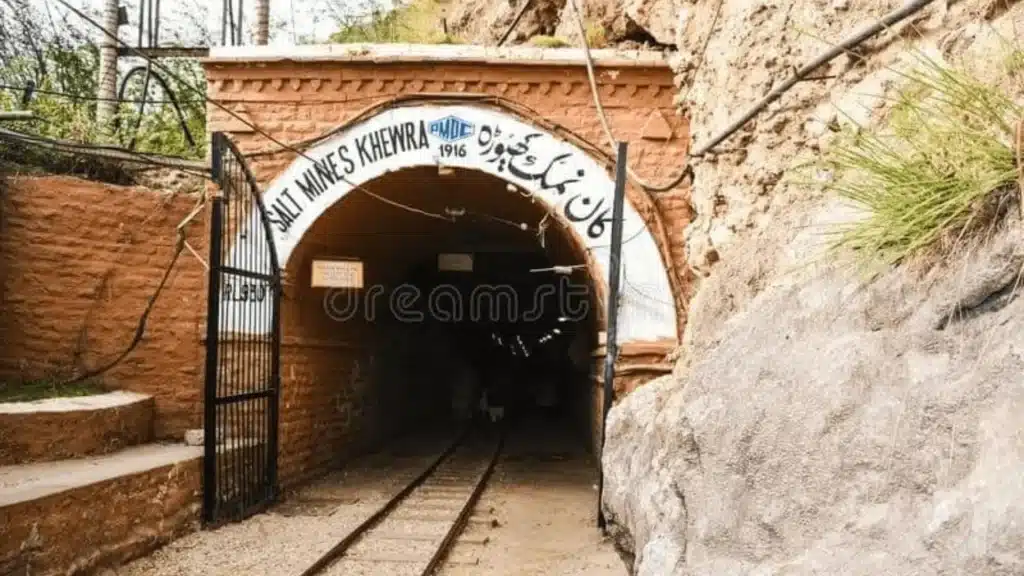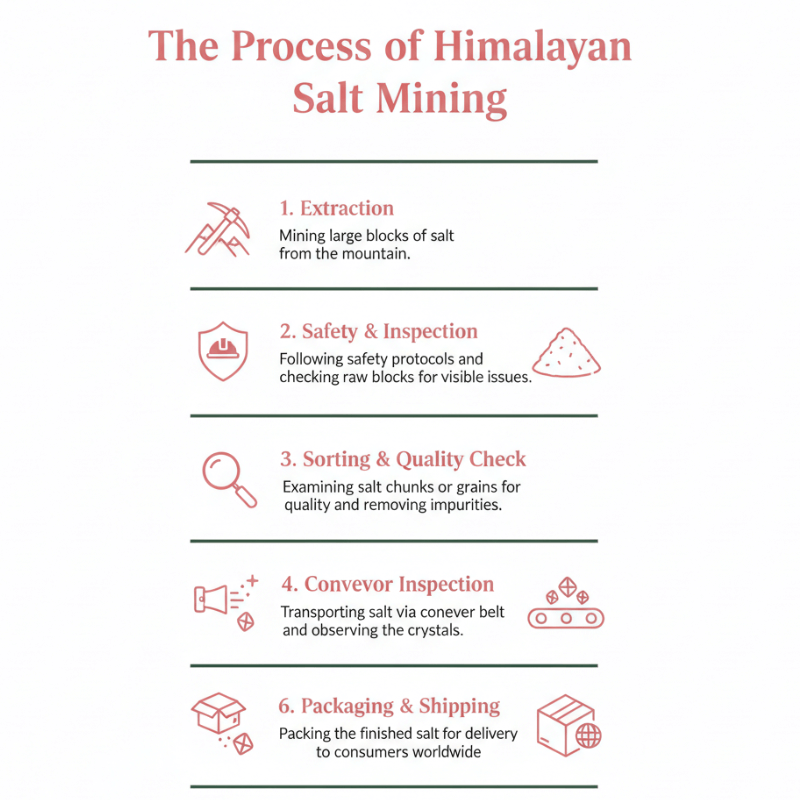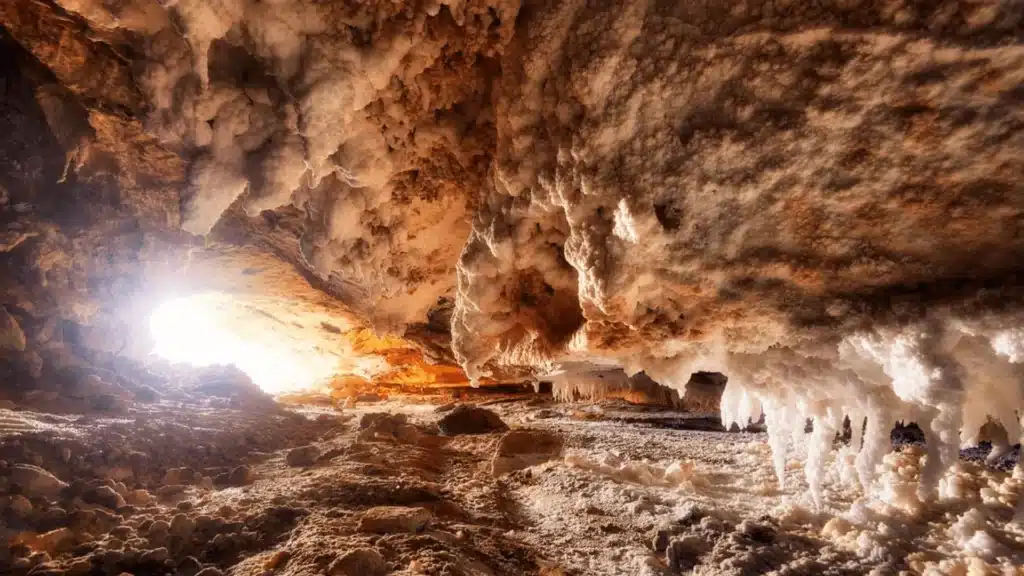
Himalayan salt is more than just a seasoning, it’s a piece of history, culture, and geology packed into those beautiful pink crystals. Known for its unique color and rich mineral content, Himalayan salt has gained worldwide popularity in kitchens, spas, and wellness products. But have you ever wondered what the process of Himalayan salt mining actually looks like?
At Sobaan Salts, we believe that understanding this process helps people appreciate not just the taste but also the tradition and care behind every grain of Himalayan pink salt.
Table of Contents
Did You Know?
The Khewra Salt Mine in Pakistan, the primary source of Himalayan salt, is over 250 million years old and produces nearly 400,000 tons of salt annually.

A Brief History of Himalayan Salt Mining
The story of Himalayan salt goes back to 326 BC, when Alexander the Great’s army discovered horses licking salt rocks in the foothills of the Himalayas. Since then, this salt has been mined and valued as a natural treasure.
The Khewra Salt Mine, located in Punjab, Pakistan, is the second largest salt mine in the world. Over the centuries, mining techniques have evolved but the essence of sustainable, traditional extraction remains. Dating back 250 million years to evaporated ancient seas, the Khewra Salt Mine stands as a geological and cultural icon in Pakistan’s Salt Range, showcasing human ingenuity in harnessing its resources over centuries.[1]
Where Does Himalayan Salt Come From?
If you’ve ever wondered “Where is Himalayan pink salt from?”, the answer lies deep inside the mountains of Pakistan.
- Primary Source: Khewra Salt Mine, Punjab
- Formation Age: More than 250 million years
- Composition: About 98% sodium chloride + over 84 trace minerals
- Unique Colors: Ranging from white and pink to deep red, depending on mineral content
The himalayan mountain salt found here isn’t just beautiful, it’s a reflection of the Earth’s geological history.
Hidden in Pakistan’s Salt Range, the Khewra Salt Mine holds about 220 million tons of reserves enough to supply pink salt for the next 350 years at current mining rates.[2]
The Step-by-Step Process of Himalayan Salt Mining

The mining process is fascinating and carefully designed to maintain both quality and sustainability. Let’s look at how this salt travels from the mountain to your kitchen.
1. Careful Extraction
Miners use the “room and pillar” method, leaving behind supporting structures to ensure the stability of the mine. Large salt blocks are extracted with controlled techniques to prevent damage.
Explore: How To Use Himalayan Salt Block
Did You Know?
Miners rely on the room-and-pillar technique for about 75% of Himalayan salt extraction, forming impressive 50-meter-high chambers that double as highlights for the mine’s 250,000 annual visitors, a number that’s steadily climbing post-pandemic.[3]
2. Safety and Inspection
Strict safety protocols are followed to protect miners. After extraction, the salt is inspected for quality, purity, and mineral consistency.
3. Crushing and Sorting
The salt blocks are crushed into smaller pieces. These are sorted by size and color, ensuring uniform quality for culinary, industrial, and wellness uses.
4. Cleaning and Dedusting
The salt goes through a dedusting process, which removes impurities like dust and fine particles keeping the Himalayan salt minerals intact.
Himalayan salt mining impacts less than 0.5% of Khewra’s overall area each year, yet refining a single ton requires about 10,000 liters of water, underscoring the push for more eco-friendly approaches in the future.[4]
5. Packaging and Export
Finally, the salt is packed, labeled, and shipped globally. At Sobaan Salts, we ensure packaging is hygienic, eco-friendly, and maintains freshness.
Discover: How To Import Himalayan Salt From Pakistan
Interestingly, 60% of Himalayan salt finds its way into non-food roles these days, like the 500,000 salt lamps sold each year in the US, adding a cozy vibe to wellness routines.[5]
Table: Himalayan Salt vs Regular Table Salt
Feature | Himalayan Salt | Regular Table Salt |
Source | Khewra Salt Mine, Pakistan | Evaporated sea water / rock salt |
Color | Pink, red, or white | White |
Minerals | Primarily sodium chloride only | |
Processing | Minimal, hand-extracted | Highly refined, often bleached |
Additives | None (natural) | Often contains iodine & anti-caking |
Uses | Culinary, wellness, décor, skincare | Mainly culinary |
Why Is Himalayan Salt So Valuable?
The value of Himalayan salt lies in more than just its color:
- Mineral Benefits: Contains iron, calcium, magnesium, and potassium.
- Unique Uses: From cooking and skincare to salt lamps and bricks.
- Cultural Significance: Supports Pakistan’s economy and heritage.
- Wellness Popularity: Used in halotherapy (salt therapy rooms) and spas.
Environmental Sustainability of Mining
One of the most asked questions is: Is Himalayan salt sustainable?
The answer is yes when mined responsibly. Since the salt deposits are massive, and extraction uses traditional techniques, the environmental impact is minimal compared to industrial mining. Additionally, strict regulations ensure that the mines remain structurally safe and ecologically sound.
Uses of Himalayan Salt After Mining
Once mined, Himalayan salt finds its way into multiple industries:
- Culinary: Cooking, grilling blocks, finishing salt.
- Skincare: Bath salts, scrubs, soaps.
- Décor: Salt lamps, candle holders, wall panels.
- Wellness: Salt therapy rooms, inhalers, detox baths.
At Sobaan Salts, we specialize in crafting all these variations, ensuring authenticity and natural quality.
Health and Mineral Benefits of Himalayan Salt
Many people use Himalayan salt not just for taste but also for wellness.
- Contains trace minerals like potassium, magnesium, and calcium.
- Believed to support hydration and electrolyte balance.
- Used in halotherapy (salt therapy) for respiratory wellness.
- Adds a unique, earthy flavor compared to processed salts.
Read About: Health Benefits Of Himalayan Pink Salt
However, Himalayan salt does not naturally contain iodine, so those at risk of iodine deficiency should keep this in mind.
Read: Does Himalayan Pink Salt Have Iodine
Key Takeaways
- The process of Himalayan salt mining is safe, sustainable, and centuries-old.
- Himalayan salt is primarily mined in the Khewra Salt Mine, Pakistan, a natural wonder with over 250 million years of history.
- Unlike refined table salt, Himalayan salt contains 84+ minerals, giving it its distinct pink color and wellness reputation.
- At Sobaan Salts, we ensure the salt you use is carefully sourced, processed naturally, and packaged responsibly.
- While Himalayan salt has health benefits, it does not naturally contain iodine, which is an important dietary consideration.
The Himalayan salt industry hit $470.2 million in value back in 2023 and is on track to reach $691.7 million by 2030, growing at 5.7% annually, largely thanks to Pakistan’s dominant 85% share of worldwide supply.[6]
Pakistan’s exports of Himalayan pink salt to China reached $1.83 million in the first three months of 2025, marking a 40% increase compared to the same period in 2024, driven by rising popularity in wellness and culinary applications.
Source: Arab News (April 21, 2025)
References:
- Soni, M. Mining in the Himalayas. CRC Press, Taylor & Francis.
- Singh, R. P. (2019). Introduction to Himalayan Geology. In The Himalayan Region (pp. 1–25). Springer.
- Ali, S. et al. (2019). Himalayan Salt Resources and Extraction. ScienceDirect.
- Wadia, D. N. (1931). The Geology of India. JSTOR.
Share This Post
Article By

